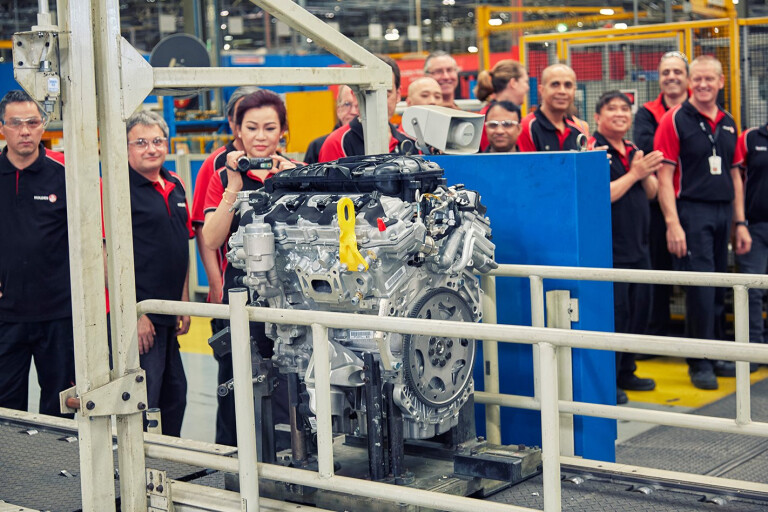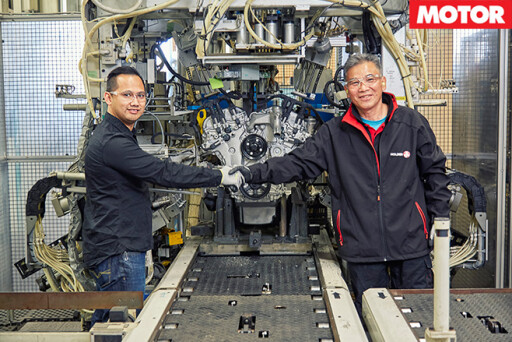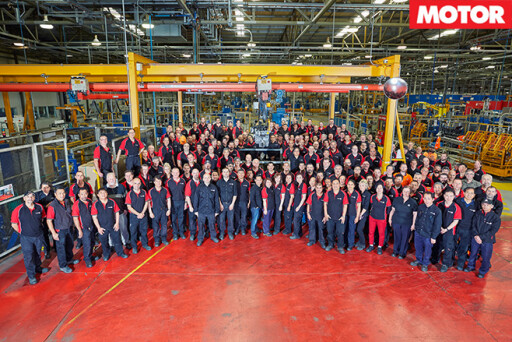
Holden has ceased engine manufacturing in Australia after 68 years with the final 3.6-litre V6 produced today at Fishermans Bend, Port Melbourne, marking the plant’s closure.
The 175 employees made redundant from the facility – which opened in 1936 with vehicle production before engine production was added in 1948 – will be offered up to $3000 in training as part of Holden’s $15m contribution to the federal government’s Growth Fund for employee assistance as car manufacturing comes to a close in this country.
Holden says 57 employees have voluntarily left the engine plant so far, with 80 per cent securing other employment and the remainder retiring or not seeking other opportunities.

The HFV6 notched up 1,137,282 units – 699,806 for Australia and 437,436 exported to every continent except Antarctica. The final unit was stamped ‘last one 29/11/16’ and rolled off the production line at 10:50am at a private event for staff only.
The current V6’s 13-year run is, however, one-tenth of Holden’s claim that “more than 10 million engines” have been built at the Fishermans Bend site.
 Holden last produced its series of ‘red’ and ‘grey’ sixes most notably in 3.3-litre guise for the VB to VK Commodore before switching to Nissan 3.0-litre Japanese-import power for the VL in 1985 and subsequently Buick 3.8-litre US-import grunt from 1988 until 2004.
Holden last produced its series of ‘red’ and ‘grey’ sixes most notably in 3.3-litre guise for the VB to VK Commodore before switching to Nissan 3.0-litre Japanese-import power for the VL in 1985 and subsequently Buick 3.8-litre US-import grunt from 1988 until 2004.
It was also a major producer of GM ‘Family II’ four-cylinder engines from 1982 – first for the Camira and subsequently for the late-1990s/early 2000s South Korean-made Daewoo Nubira/Leganza and locally produced Holden Vectra. It was then tagged for export markets including China and Thailand until production concluded after 27 years in 2009.
The mighty Aussie V8 finished a decade earlier in 1999, when the 5.0-litre and 5.7-litre units were replaced by GM’s all-alloy Gen III for the VT Series II Commodore.
In total 32 different engine types were produced around the corner from Melbourne’s CBD.
 Six-cylinder engines will be stockpiled for Commodore Evoke, SV6 and Calais models for the remaining 12 months of production at Elizabeth, South Australia, which GM Holden’s executive director of manufacturing Richard Phillips said is “normal practice in the car industry (where) various components are built ahead of final vehicle assembly.”
Six-cylinder engines will be stockpiled for Commodore Evoke, SV6 and Calais models for the remaining 12 months of production at Elizabeth, South Australia, which GM Holden’s executive director of manufacturing Richard Phillips said is “normal practice in the car industry (where) various components are built ahead of final vehicle assembly.”
“Which is why Holden’s transition out of local manufacturing continues to happen in a planned, phased and orderly process,” he added in a statement.
GM Holden chairman and managing director Mark Bernhard further said: “While it was an emotional time to see the last engine built today, we are proud to retain a significant presence in Australia for the long-term.”
“This includes more than 300 people in our local design and engineering workforces across our world-class design studios in Port Melbourne and the outstanding Holden Proving Ground in Lang Lang … in addition to the approximately 700 corporate staff and 10,000 people employed across our dealer network.”
Want more? Check out 9 hot Holden concepts.

COMMENTS